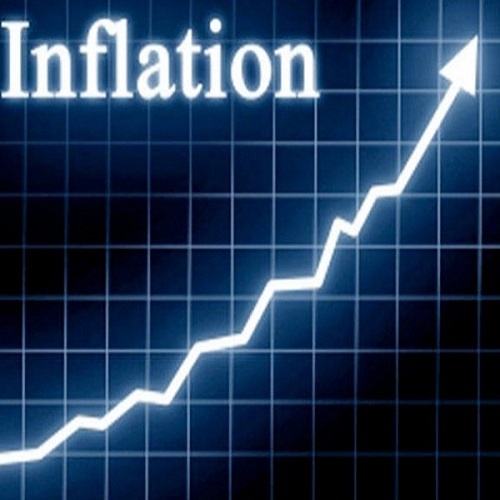New Delhi: India’s retail inflation witnessed a notable easing, touching a 10-month low of 4.85 per cent on an annual basis in March 2024.
While this development may signal positive momentum, experts caution against complacency, particularly concerning persistent challenges in food inflation.
Sunil Kumar Sinha, Senior Director and Principal Economist, and Paras Jasrai, Senior Analyst at India Ratings and Research (Ind-Ra), provided insights into the latest data, highlighting a mixed picture of the Indian economy.
Sinha and Jasrai noted that March 2024’s retail inflation figure of 4.85 per cent was within anticipated levels.
However, they raised concerns over the enduring trend of inflation exceeding the Reserve Bank of India’s (RBI) target of 4.0 per cent for 54 consecutive months and 18 quarters.
Sinha and Jasrai stated, “March 2024 retail inflation at 4.85 per cent was 10 months low and was on expected lines. Retail inflation now for 54 consecutive months and 18 quarters is higher than the RBI inflation target of 4.0 per cent. While the headline inflation is trending downwards, the food inflation is still high.”
Despite the overall downward trajectory of headline inflation, the duo pointed out that food inflation remained a persistent challenge.
They highlighted worrying trends, including the reversal of a declining trend in cereals inflation after seven months, along with elevated inflation rates in essential commodities such as eggs, vegetables, pulses, and spices.
Emphasizing the disproportionate impact on lower-income groups, they warned of a potential aggravation in vegetable inflation until at least June 2024 due to unfavourable base effects.
They underlined, “The worrying trends on food inflation are – a reversal of the declining trend of cereals inflation of seven months in March 2024, elevated inflation in commodities such as egg, vegetables, pulses and spices. Food inflation impacts people at the bottom of the pyramid more than the people belonging to the upper-income group. The unfavourable base effect may aggravate vegetable inflation further at least till June 2024.”
Comparing March 2024 to the previous month, Sinha and Jasrai noted a decline of 14 basis points (bp) year on year in food inflation. However, they observed a sharper decline of 247bp in fuel and light inflation, attributed to a reduction in petrol and diesel prices by Rs 2 per litre on March 15, 2024.
This resulted in core inflation declining to 3.25 per cent in March 2024 from 3.37 per cent in February 2024. The full impact of the fuel price cut is expected to be reflected in April 2024 retail inflation, projected by India Ratings and Research to fall within the range of 4.65 per cent to 4.75 per cent.
Sinha and Jasrai said, “Compared to February 2024, the food inflation declined 14 bp yoy in March 2024. However, the decline in fuel and light was sharper at 247bp (petrol and diesel prices were cut by INR2/litre on 15 March 2024). This has resulted in core inflation declining to 3.25 per cent in March 2024 compared to 3.37 per cent in February 2024. The full impact of fuel price cut will be reflected on April 2024 retail inflation, which Ind-Ra expects to come in the range of 4.65 per cent – 4.75 per cent.”
They added, “4QFY24 retail inflation (5.0 per cent) was lowest in last 12 quarters and FY24 annual inflation (5.4 per cent) has turned out to be four years low. Yet the rural-urban divide in inflation has widened to 23 23-month high of 1.31 percentage points in March 2024. In view of the persistence of threat from the food inflation India Ratings and Research (Ind-Ra) expects RBI to stay put on monetary easing at least in the first half of the current fiscal.”
In a broader context, the fourth quarter of FY24 saw retail inflation at its lowest in the last 12 quarters, standing at 5.0 per cent. Additionally, the annual inflation for FY24 hit a four-year low at 5.4 per cent.
However, despite these positive developments, the rural-urban divide in inflation widened to a 23-month high of 1.31 percentage points in March 2024.
Echoing similar sentiments, Upasna Bhardwaj, Chief Economist at Kotak Mahindra Bank, stressed the importance of vigilance amidst the complex economic landscape.
Bhardwaj acknowledged that March’s headline inflation met expectations but cautioned against potential volatility in food inflation due to upcoming heatwaves.
She anticipates the Monetary Policy Committee (MPC) to maintain a wait-and-watch approach until the first half of FY25, with possible easing in the latter part of FY25, contingent upon factors such as monsoon patterns, crude oil prices, and the timing of the Federal Reserve’s rate easing cycle.
Bhardwaj said, “The headline inflation for March has come in line with expectations. While core inflation continues to moderate, we remain wary of the heatwaves going ahead which could keep food inflation elevated and volatile in the summer months.
She added, “Overall, we expect the MPC to remain on a wait-and-watch mode until H1FY25, with possible easing likely towards the latter part of FY25 depending on the evolution of monsoons, crude oil prices and timing of Fed’s rate easing cycle.”
(With inputs from ANI)











